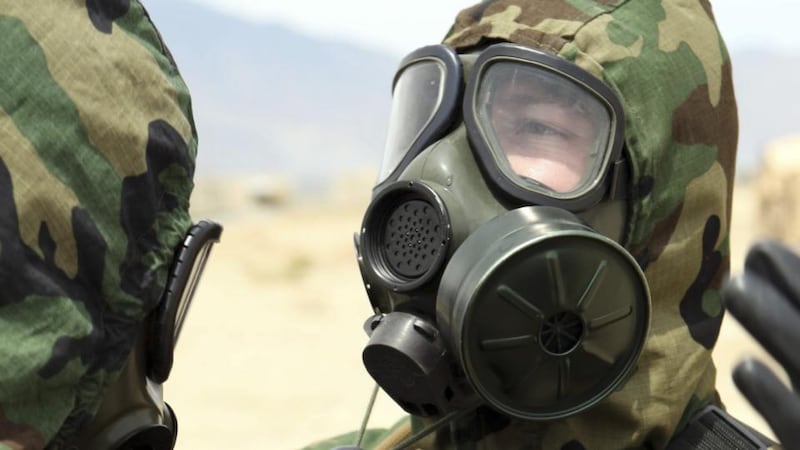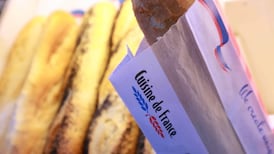The EU military is trying to develop ways to protect soldiers against biological warfare and it has turned to an Irish company to help develop a defence.
The European Defence Agency is funding research being carried out at Aquila Bioscience, a campus company based at NUI Galway. The two-year programme involves developing decontamination products that can wipe out bacteria, viruses and biotoxins while remaining portable, easy to use, non-toxic and environmentally friendly, says Aquila co-founder Prof Lokesh Joshi.
It sounds like a tall order, given that the research outcomes could be used for example to wipe out Ebola on surfaces or identify what types of biological weapons are being used against the European military, says Joshi who is NUI Galway's Science Foundation Ireland Stokes Professor of Glycosciences.

The work will be based on Joshi's years of research studying sugars, not the kind you spoon into tea but the complex sugars used by nature as a way to allow cells to communicate, the scientist explains.
“My research is about sugar biology. There is a strong emphasis on DNA and RNA in biology but nearly all cells of the body are decorated with sugars that are like hairs on the body. They provide the language for cells to talk to one another, but also to bacteria, yeasts, viruses and other pathogens.”
These sugars provide connection points that, say, allow an attacking virus to latch onto a cell and then enter it and take it over. “It is like a lock and key where the key happens to be a sugar,” he says.
“Pathogens are very clever at figuring out glycan [sugar] patterns and use this to attach to and invade their hosts. We want to turn the tables by using glycans to neutralise pathogens’ approach.”
Potential uses
There are several ways it could be used. It could attach to the pathogen and inactivate it or it could “mob” the pathogen and block off its connection points.
Glycoscience has tended to be eclipsed by the genetic technologies but how these sugar connections work is central to health and also to disease. And now sugars will form the foundation for the research to be completed for the European Defence Agency.
The agency acts as a coordinating body that allows defence forces in the EU states to mesh smoothly. Member states including Ireland contribute to the agency in support of defence-related research.
This work will be funded as an agency joint investment programme, he says.
“The EDA is keen on looking at decontamination of military equipment and wants to see how to clean up anything, computers, vehicles, weapons and soldiers.”
For pathogens bleach is the usual response but this is harmful for the skin and it also damages surfaces so is not the best option.
“Our solution is environmentally stable, safe for humans and the environment but still cleans surfaces,” he explains. “It is based on developing a combination of natural and complex synthetic sugars.
"What nature has done over billions of years is to evolve these molecules for communication. We are now combining evolution with modern chemistry."
The plan is to develop carriers that have the right kinds of sugars on their surfaces to latch onto and hold pathogens or chemical agents. “It is like adhesive tape or like Velcro.” The sugars lock on and then carry away the biotoxin.
The challenge is to develop the right kinds of sugars that will match up with those on the target. For this reason some will be naturally occurring while others may be synthetic.
Forensic evidence
The agency was particularly interested in whether this approach could be used to protect forensic evidence. An example might be to confirm whether a biological or chemical weapon has been used.
“If you use bleach the evidence is destroyed, with our technology it isn’t,” he says.
The same technology can be used in another way, to identify what agent is being used. A test kit could say whether the agent was a pathogen or a particular chemical, he says.
This has military uses but the technology can be used much further afield. “Science Foundation Ireland gave us a grant several years ago to demonstrate how the technology could be used with bacteria. We are trying to make it more universal for pathogens of any kind,” he says.
“It could lead to a simple product that could be used by ordinary people, for example, against superbugs like MRSA. You could use it for rapid tests in airports. We are also looking at joining USAid in a project to use it against Ebola to clean skin and surfaces.”
The researchers were looking at “different strategies to prevent Ebola binding and to decontaminate surfaces infected with Ebola”.
The Irish military is interested in these developments and has visited Prof Joshi's lab. The Department of Defence supported introductions to Aquila's Czech collaborators, said Michael Murphy of Enterprise Ireland.
The collaborators have the licences needed to handle dangerous pathogens to ensure the treatments actually work.
The project also has significant export potential, Mr Murphy says.
“The technology is exciting as it disables pathogenic activity using naturally occurring sugars. It’s a platform technology that could find unexpected applications. With the right business model the potential for high-end jobs and exports is significant,” he says.
The work being done at Aquila has grown directly out of Prof Joshi’s work at the Alimentary Glycosciences Research Cluster at NUI Galway. Funded by the foundation five years ago it was set up to focus on glycoscience.
At the time it was a relatively new and emerging area of research, but has been used by Prof Joshi to discover novel diagnostics, therapeutics and nutraceuticals.
It is hoped that these sugar-based technologies can be used with diseases such as cancer, and inflammation but also in neuroscience and biomaterials.











